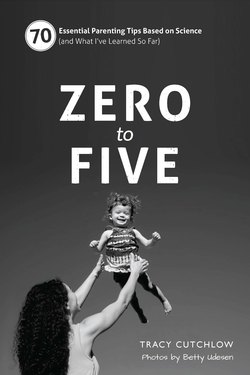Читать книгу Zero to Five - Tracy Cutchlow - Страница 22
ОглавлениеComfort newborn with the familiar
Thrust into a foreign place, who wouldn’t be comforted by the vestiges of home?
Newborns cry because they’re hungry or gassy or sleepy or hot or cold or wet. And they cry after you’ve checked all those things, for reasons that will remain a mystery. Baby’s dealing with a lot right now. You can’t always solve the problem to stop the crying, but you can comfort baby as he cries.
Scent
Researchers recorded the crying of newborns, a mere 30 minutes old, who were separated from their mothers for an hour. If the babies were exposed to the smell of the mother’s amniotic fluid—the protective sac of water baby had been floating in before birth—they cried less than thirty seconds. If not, they cried more than two minutes.
What else is a familiar scent to a newborn? Well, mom, for one. Baby can smell you starting at seven months in the womb—your body odor, even the lotion you rub on your belly each evening. (Might I recommend Almond Supple Skin Oil from L’Occitane? Mmm. Drop hints for your baby shower.) Soon after birth, dad’s scent can become familiar, too.
During the painful heel prick to draw baby’s blood, babies cried and grimaced much less if they smelled a familiar scent. Mama’s milk worked for breastfed babies. The scent of vanilla, which researchers previously had wafted under baby’s nose, worked as well.
Sound
If you sang or read to baby during your third trimester of pregnancy (see page), use that song or story to comfort baby right after birth.
Motion
Wrap baby to your body and walk (see page)—a very familiar cadence to baby.
Sniff, sniff? Newborns cry less
Median crying time during separation from mom, when exposed to her amniotic fluid vs. no exposure.
GOOD TO KNOW
Baby’s first three months are called “the fourth trimester.” The evolutionary theory is that babies could use more time in the womb—but they must be born early so their heads fit through the birth canal.
To ease baby’s transition outside the womb, parents try to replicate the noisy, cozy, warm, rock-and-roll conditions inside the womb. That’s why Harvey Karp’s “Five S’s” work so well to comfort baby: swaddling, side or stomach position, swinging, shushing, and sucking. See happiestbaby.com for details.
